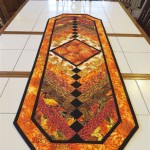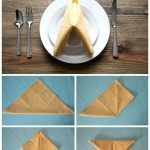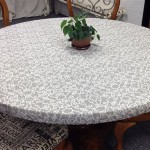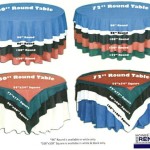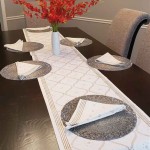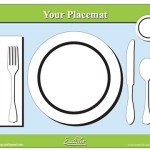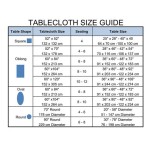Table Settings: An Artful Guide to Hosting
Table settings, often overlooked in the rush of preparing a meal, are an essential element of a successful dining experience. They transform a simple meal into a thoughtful and beautiful occasion, adding a touch of formality and elegance. Beyond aesthetics, proper table settings communicate respect for both the guests and the occasion. This article explores the various components of a standard table setting, offering insights into their purpose and placement.
Understanding the Basics
Table settings are a hierarchical arrangement of tableware, designed to facilitate comfortable and efficient dining. The fundamental components include:
- Dinner Plate: The largest plate, serving as the base for all other items.
- Charger Plate: A decorative plate placed beneath the dinner plate. It is typically removed before the main course.
- Salad/Appetizer Plate: A smaller plate placed on top of the dinner plate, used for serving salads or appetizers.
- Bread and Butter Plate: A small plate positioned to the left of the dinner plate, used for bread and butter.
- Napkin: Placed either on the dinner plate or to the left of the fork.
- Flatware: Forks, knives, and spoons are arranged according to the order of courses.
- Glasses: Wine glasses, water glasses, and other beverage glasses are positioned above the knife.
The placement of these items follows a well-established protocol, ensuring a logical flow for the diner. Generally, utensils are arranged in the order they are intended to be used, working from the outside in. The fork is positioned to the left of the plate, while the knife is placed to the right, blade facing the plate. Spoons are usually placed to the right of the knife, except for soup spoons, which are placed above the dinner plate.
Beyond the Fundamentals: Enhancing the Setting
While the basic table setting provides a functional foundation, there are several ways to enhance the visual appeal and create a more refined dining experience. These additions include:
- Place Cards: Personalized cards with guests' names, arranged at each place setting, add a touch of formality and assist with seating arrangements.
- Centerpiece: An eye-catching centerpiece, featuring flowers, candles, or decorative elements, transforms the table into a focal point.
- Runners and Tablecloths: Selecting suitable runners and tablecloths adds color, texture, and elegance to the table. Consider using coordinating fabrics or colors to create a cohesive look.
- Additional Utensils: Depending on the menu, additional utensils, such as oyster forks, dessert spoons, or chopsticks, may be required. These are typically placed above the dinner plate, parallel to the table edge.
The choice of tableware and accessories should reflect the style and formality of the occasion. For a casual dinner, a simple setting with a few essential items might suffice. A formal event, however, could demand a more elaborate setting, incorporating fine china, crystal glassware, and intricate silverware. These elements enhance the visual aesthetics, creating a more polished and sophisticated dining experience.
Adapting Table Settings for Different Occasions
While the basic principles remain consistent, table settings can be adapted to suit various dining scenarios. For example, a buffet-style meal would require fewer utensils and glasses, as guests typically serve themselves. A picnic setting might involve disposable plates and cutlery, but still retains the core principles of arrangement and functionality. Likewise, a children's birthday party could incorporate playful decorations and whimsical tableware, adapting the setting to suit the younger guests.
Regardless of the occasion, the key is to maintain a sense of balance and consistency. Excessive clutter can be overwhelming, while a minimalist setup might lack visual appeal. The goal is to strike a perfect balance between practicality and aesthetics, creating a welcoming and comfortable environment for your guests.
Table settings are an art form, reflecting both the host's taste and their consideration for their guests. By mastering the basics and incorporating creative elements, you can transform your dining experience into a delightful and memorable occasion.

5 Table Setting Ideas For Everyday Use Doğtaş

Table Setting And Utensil Use For A Formal Dinner Crystalview

20 40 60 Etiquette Setting The Table Tone For Your Dinner Party

Table Manners

How To Set A Table With Napkins Your Guide Beautiful

Setting The Perfect Table Escoffier

How To Set A Table With Napkins Your Guide Beautiful

A Simple And Beautiful Holiday Table Setting Sanctuary Home Decor

How To Set A Beautiful Formal Table It S Easy Mantel And

Tips For Setting A Quick Beautiful Outdoor Table Sanctuary Home Decor
Related Posts

